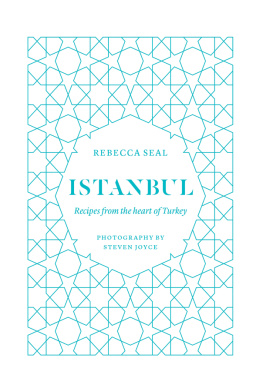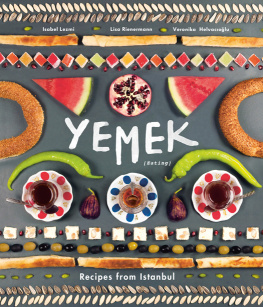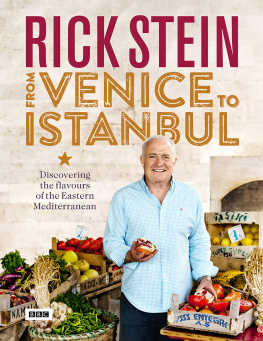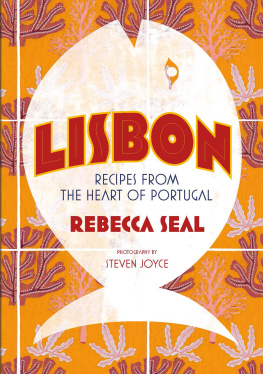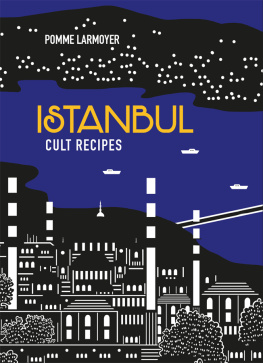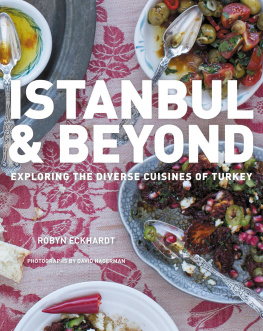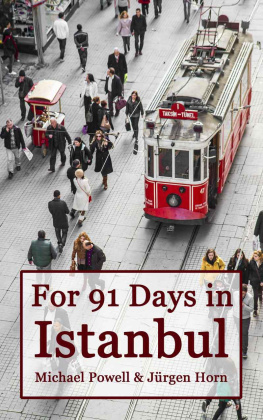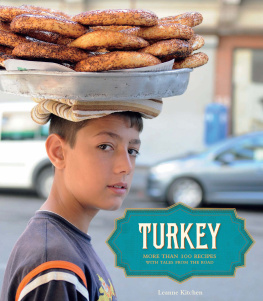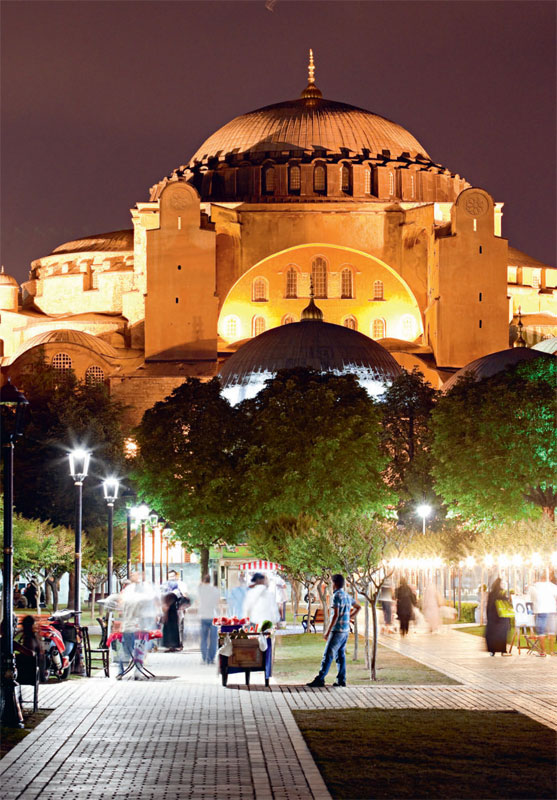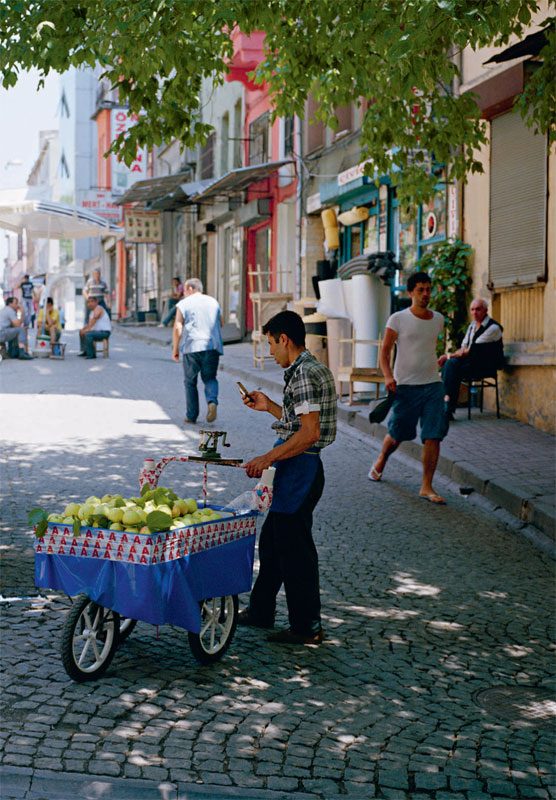For our parents
Dave, Hilary, Patrick and Sheila

No matter how many times I visit, Istanbul remains a fascinating place. A city of 17 million people covering 2000 square miles and straddling the border between Asia and Europe, it is an incredible mixture of the very old traces of Neolithic settlements were recently discovered near the Old Town, Sultanahmet and the very new, as shiny modern towers leap up next to domed mosques or stone churches.
Istanbuls food culture is as diverse as its architecture, with influences coming from the Persians and Ottomans of the past; its Middle Eastern neighbours, the Greeks, Armenians, Turks and Kurds; nearby Asian and European countries; and Christian, Orthodox, Muslim and Jewish communities. The result is a riot of tastes, in dishes cooked using the best of local and seasonal ingredients from both the surrounding countryside and the sea.
Whenever I visit Istanbul and start to ask questions about Turkish food, someone always reminds me that it doesnt really make sense to talk about Turkish food as every dish is connected to the specific place it came from. A particular meal may be made different ways in different streets in the same neighbourhood, depending on where the cook or the cooks family come from. Like the Turkish language, food is seen as a carrier of culture. What each community here shares, however, is a love of strong flavours whether its the heat of spice, the tang of salty pickles or the sticky sweetness of honey.
Food is at the centre of everything here, whether in upmarket areas like old-money Nisantasi, where youre perhaps more likely to catch a whiff of truffles than charcoal-grilled meats, or on the waterfront at Galata Bridge buying a fish sandwich and beer taken from a bucket of ice.
Celebrations and meals out usually start with a selection of meze dishes, some hot and some cold, for everyone to share. Many restaurants dont have menus, but instead bring round huge trays laden with mezes for you to pick from, or beckon you to choose from the counter. They can be anything from dishes of pickles and dips to fried vegetables, salads, cheeses, fish, meat and poultry dishes. Meze are not meant to be rushed have two or three per person, plus some breads for scooping, and nibble them alongside some excellent Turkish wine, a cold glass of aniseed raki or a Turkish beer.
Elinize saglik! Afiyet olsun! (Health to your hands! Enjoy the food!)
REBECCA SEAL
There are a few ingredients that make all the difference to Turkish cooking. Although there are good alternatives that you can use if you cant get hold of them, they are all easy to order online and some of them you can find in supermarkets. In fact, once my obsession with Turkeys food really took hold, I discovered four Turkish stores within a short distance of my house on the outskirts of London. Ask around in your neighbourhood they might look like newsagents or convenience stores, but all you need is a couple of shelves of Turkish goodies in the back and youre all set.
Turkish Tomato Paste (Domates Salasi)
Turkish tomato paste is a very concentrated paste of slowly cooked tomatoes with salt. In some dishes ones that will be cooked for a long time you can substitute regular concentrated tomato pure (paste) for Turkish tomato paste. But in anything uncooked, its best to leave it out or substitute a finely diced, deseeded fresh tomato or two. Youll lose the bright red colour the paste lends to dishes like but there are so many other great flavours in it that it wont matter too much (and tomato pure would spoil it). Italian sun-dried tomato pure is a fair substitute in uncooked dishes, although make sure its not full of extra herbs. You can buy the most enormous jars of Turkish tomato paste and they will keep for weeks once opened, in the fridge, as long as you pour a layer of vegetable oil over the exposed top to prevent the air getting to it. Or freeze it in small portions (an ice cube tray is a good idea). Some brands can be salty, so taste the dish youve added it to before adding more seasoning.
Red Pepper Paste (Biber Salasi)
This can be mild or hot make sure you check because hot really means hot! It keeps better than tomato paste and lends a lovely rich flavour to everything from salads to lamb dishes. Pour a layer of vegetable oil over the top to help it keep longer in the fridge. You can find it online or in Turkish or Middle Eastern stores. See for a recipe for a . As with tomato paste, red pepper paste can be salty, so taste for seasoning before adding salt to your dish.

Pomegranate Molasses
You can get this in lots of supermarkets and it keeps forever so its worth having a bottle in the cupboard you can use it in recipes from all over the region, not just Turkish-inspired dishes. If you cant get hold of any, lemon juice is a good match for its sourness or a little splash of balsamic vinegar will add its sweet sharpness and brown colour. Its used in salad dressings, especially with bulghur wheat, and for marinading.
Pul Biber (Red Pepper Flakes)
This is scattered over food in Istanbul like we grind black pepper. It can vary from spicy to mild and, once youve tried it, youll be as addicted as I am. The bright red flakes are found in little bowls on most meal tables and they have a distinctively different taste to the kind of chilli flakes we might scatter over pizza or into chilli con carne. You can buy bags of pul biber very cheaply online or in Turkish stores. You can use other dried mild chilli flakes but the flavour wont be the same.
Sumac
Sumac is a dark red spice with a zesty, citrussy flavour. Again, it is easy to get in some supermarkets, Middle Eastern stores and online. Sumac is sprinkled over finely sliced raw onions, a traditional accompaniment to grilled kebabs or meats like liver. Youll also see it scattered over salads, used to flavour chicken and fish, or in meatballs. You can add a little lemon juice if you dont have sumac to hand.
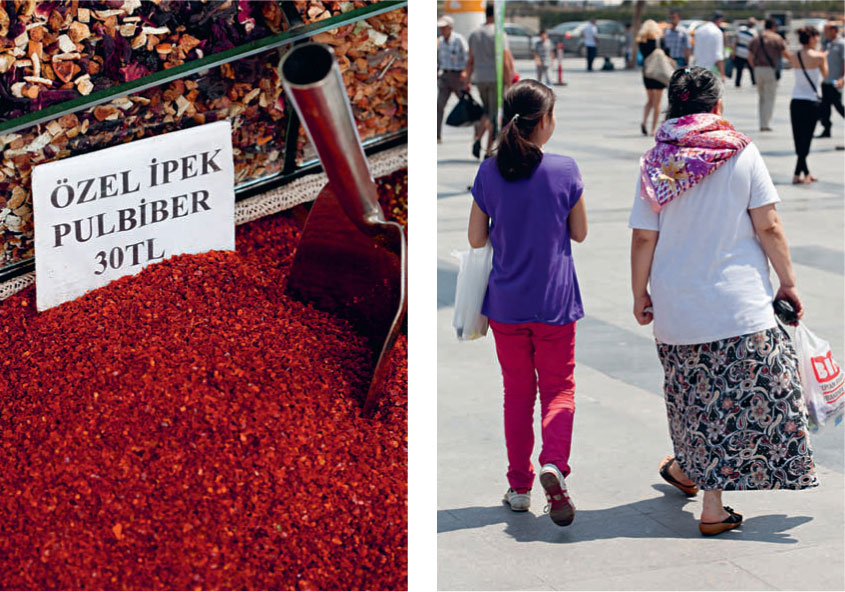

Recipe notes
Onions are large white onions, unless otherwise stated
All vegetables are medium-sized unless otherwise stated
Eggs are medium-sized, fresh and free-range, unless otherwise stated
Olive oil is extra-virgin olive oil, unless otherwise stated
For the fish recipes I recommend that you buy your fish from sustainable fisheries
When I give two figures in the number of people a recipe will serve, the smaller one is if serving as a main course, the larger one is if serving as a meze dish

